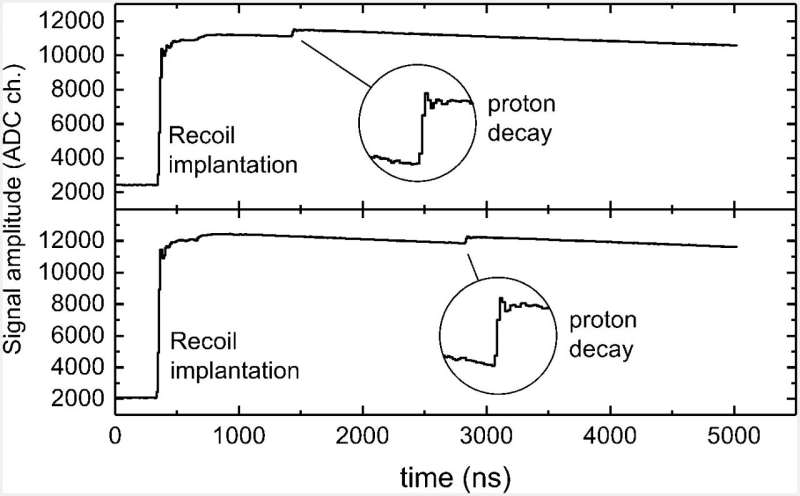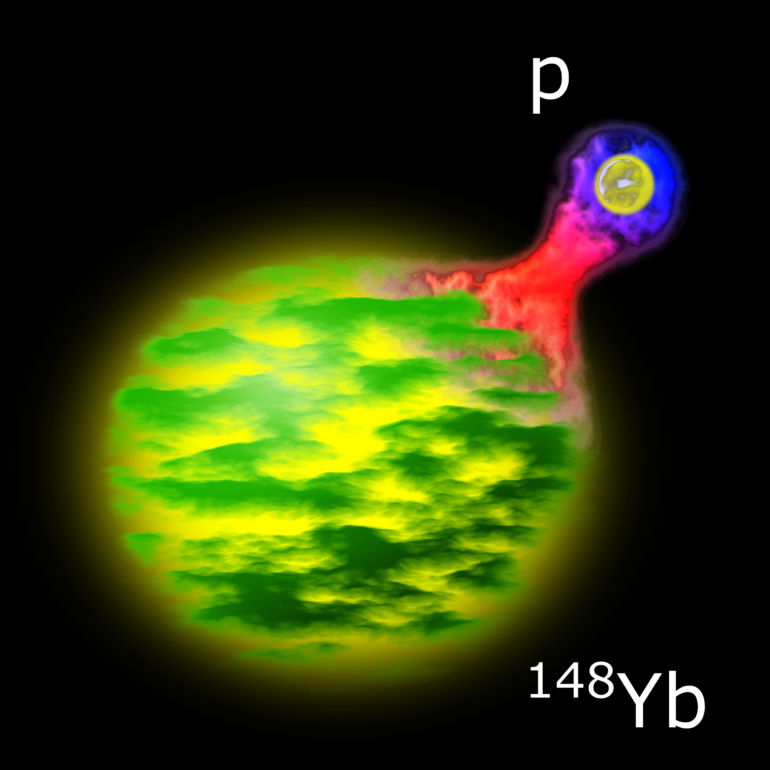A new atomic nucleus of lutetium, 149Lu consisting of 71 protons and 78 neutrons, has been synthesized in an experiment performed in the Accelerator Laboratory of University of Jyväskylä, Finland.
The new isotope was found among the products of fusion of 58Ni beam particles and 96Ru target atoms, and it was identified in the detector setup of the MARA separator. 149Lu was found to decay into 148Yb via spontaneous proton emission, which is a rare nuclear decay mode. Decay properties of 149Lu were measured to be exceptional; It has the highest decay energy and the shortest directly measured half-life of any ground-state proton emitter known to date.
Observation of the swift decay was made possible by modern digital signal handling that allows “traces” to be recorded (see attached figure for a few examples). Additionally, it was found via comparison to theoretical calculations that it is the most oblate deformed (“pumpkin shaped”) proton emitter.
This is the first instance when the models of proton emission are tested against such a strong oblate deformation. These observations will help to develop the theory of proton emission as well as the atomic mass models for the most exotic isotopes; both models are needed to understand the origin of the elements.
The results of this study have been published as the Editors’ Suggestion in Physical Review Letters.

Two examples of a trace recorded for the fast proton decay of 149Lu. © JYU
More information:
K. Auranen et al, Nanosecond-Scale Proton Emission from Strongly Oblate-Deformed 149Lu , Physical Review Letters (2022). DOI: 10.1103/PhysRevLett.128.112501
Provided by
University of Jyväskylä
Citation:
New pumpkin-shaped nucleus radiates protons with record-setting rate (2022, March 23)



